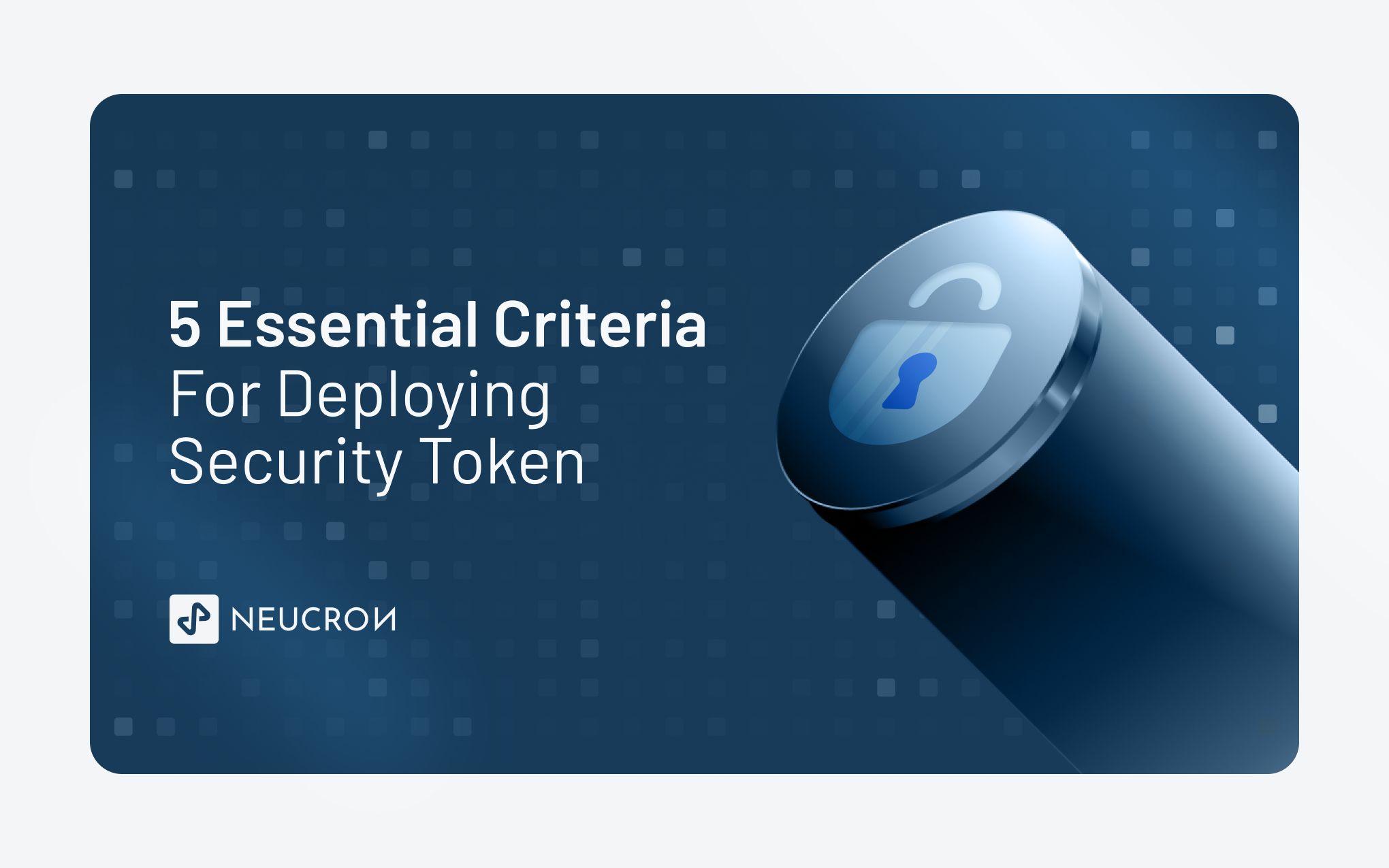Are you intrigued by the intersection of cutting-edge blockchain technology and the world of security tokens? Dive into the domain where compliance, transparency, and security come together to transform traditional asset ownership. Discover the critical needs that will pave the way for a secure and regulated tokenized future. Let's look at the five key pillars that ensure the integrity of security tokens generated on blockchain!
Compliance with Regulations
Security tokens issued on the blockchain must comply with strict restrictions. Compliance with regulatory frameworks is critical for ensuring the authenticity and legality of these digital assets. Security token issuers can avoid criminal activity by adhering to KYC (Know Your Customer) and AML (Anti-Money Laundering) procedures. Regulatory compliance builds confidence among market players and attracts institutional investors that value openness and accountability. It also protects issuers and investors from any legal ramifications by ensuring that all transactions are carried out within the framework of recognized laws.
Implementing immutable smart contracts that automate execution, validation, and consensus procedures is an effective way to maintain compliance requirements. These self-executing agreements make transactions visible, auditable, and traceable, while eliminating human mistake and fraudulent activity. In a decentralized environment where trust is spread among network members rather than centralized authority, compliance is critical for preserving order and security. Adhering to regulatory regulations provides a trustworthy environment for blockchain innovation and growth.
Asset-Backed
One of the most important requirements for security tokens created on the blockchain is that they be asset-backed. This implies that each token is backed by a real-world asset, like stock in a firm, real estate, or commodities. Having security tokens linked to actual assets gives investors intrinsic value and comfort. It guarantees that there is something of value to underpin the token's price and stability. Asset-backed tokens also create new potential for fractional ownership, allowing investors to control a portion of high-value assets without having to buy them altogether. By utilizing blockchain technology for asset-backed security tokens, issuers may simplify operations such as ownership transfer and dividend distribution while ensuring transaction transparency and security.
Tokenized Ownership Rights
Tokenized ownership rights are a necessary prerequisite for security tokens issued on the blockchain. Tokenizing ownership allows traditional assets such as real estate or shares in companies to be represented digitally on the blockchain, offering investors with fractional ownership alternatives. This approach improves market liquidity and accessibility. Token holders benefit from smart contracts since their ownership rights are executed transparently and automatically, eliminating the need for middlemen. These smart contracts provide safe transaction validation and network participant consensus. The immutability of blockchain technology ensures that ownership records remain tamper-proof and traceable at all times.
Furthermore, tokenized ownership rights provide a decentralized and trustless system in which access is controlled by preset rules inside the blockchain network. This improves security measures by decreasing the dangers associated with centralized control while also increasing interoperability and scalability across several platforms.
Transparency and Accessibility
When it comes to security tokens created on the blockchain, transparency and accessibility are critical. Blockchain technology enables a transparent and immutable ledger in which all transactions can be tracked. This openness fosters confidence among investors and stakeholders since they can check the legitimacy of ownership rights. Accessibility is another important consideration in ensuring that security token offers reach a larger audience. Issuers may use blockchain technology to tokenize assets, making them easily available to a worldwide pool of investors. This creates new options for liquidity and investment diversification.
Furthermore, blockchain technology gives real-time updates on asset performance, allowing investors to make educated decisions rapidly. Blockchain's decentralized structure means that information is not controlled by a single body, making it more accessible to all parties participating in the token ecosystem. Transparency and accessibility are key pillars in the realm of blockchain-based security tokens, creating confidence and democratizing access to investing possibilities like never before.
Security Measures
Robust procedures are required to ensure the security of a security token created on the blockchain. The digital nature of blockchain technology necessitates strict precautions against cyber attacks and illegal access. Implementing multi-factor authentication and encryption approaches can improve the security of the token ecosystem. By implementing these procedures, issuers can protect sensitive data and transactions from possible intrusions.
Regular audits and penetration testing assist discover system vulnerabilities, allowing for quick repair steps. Continuous monitoring of network traffic is also critical for recognizing any unusual behaviour or abnormalities that might signal a security compromise. Furthermore, establishing safe smart contracts with built-in validation processes can reduce the likelihood of fraudulent activity or contract manipulation. These automated procedures ensure that transactions are completed properly and openly, hence increasing stakeholder trust.
In conclusion, Security tokens generated on the blockchain provide a bright future for the financial industry by combining the advantages of blockchain technology with traditional securities. These security tokens give investors new confidence and trust in the digital asset arena by ensuring regulatory compliance, being asset-backed, tokenizing ownership rights, preserving transparency and accessibility, and applying strong security measures.
As the ecosystem evolves and matures, issuers and investors must keep up with the newest changes in regulatory frameworks, security standards, and technical improvements. By following best practices and staying ahead of possible risks and problems, stakeholders may realize the full potential of security tokens as a safe and efficient means to digitize assets while encouraging innovation in the global financial sector.

